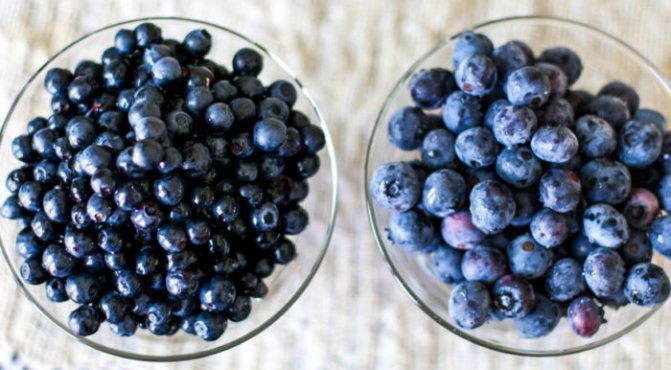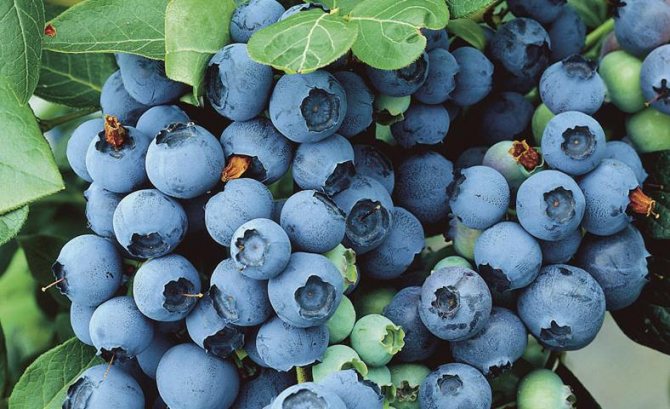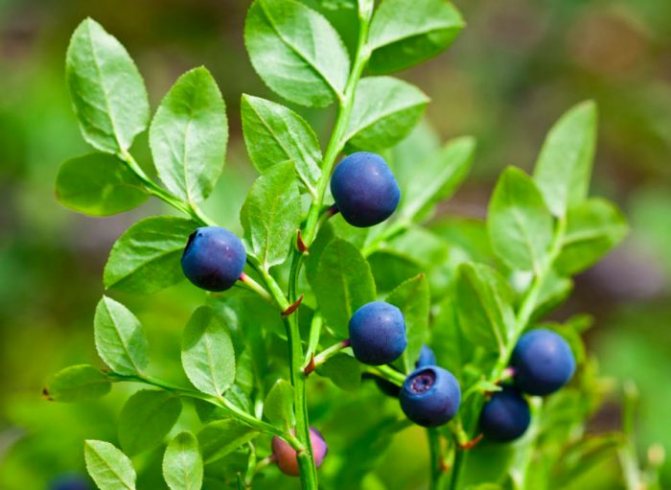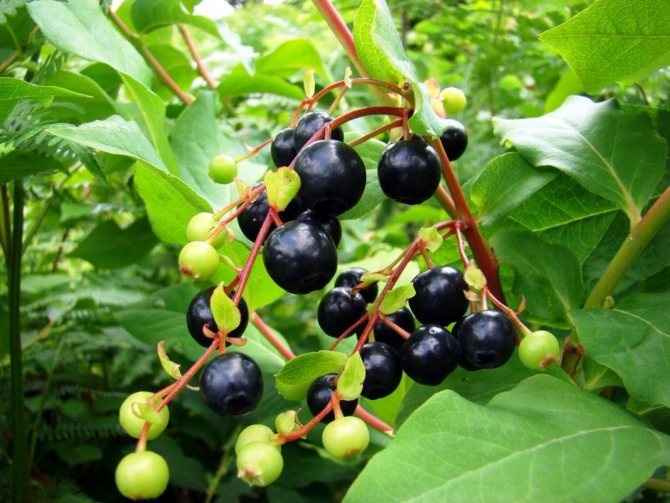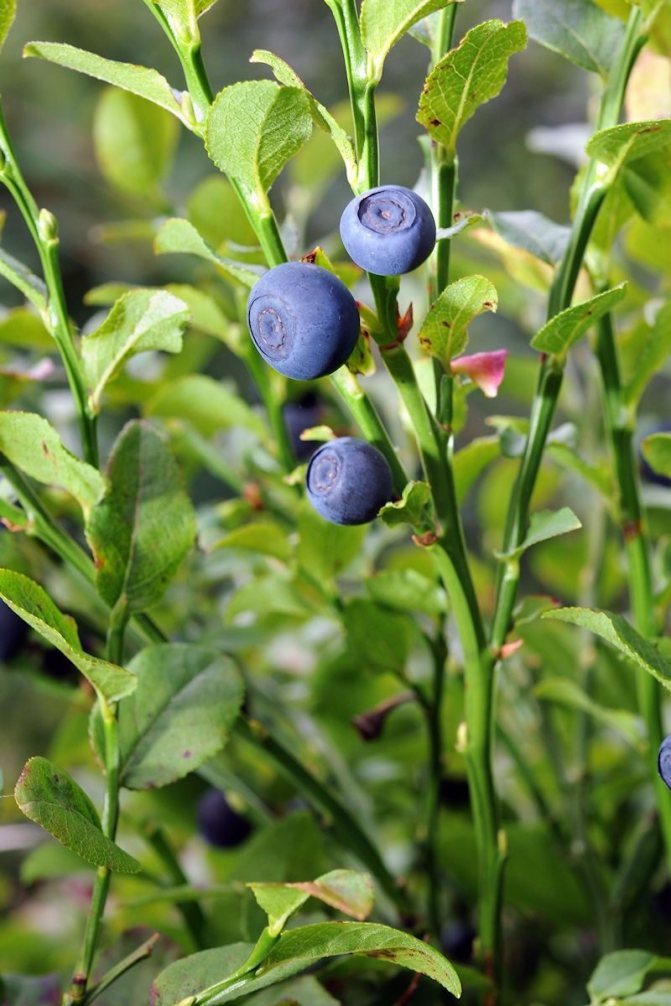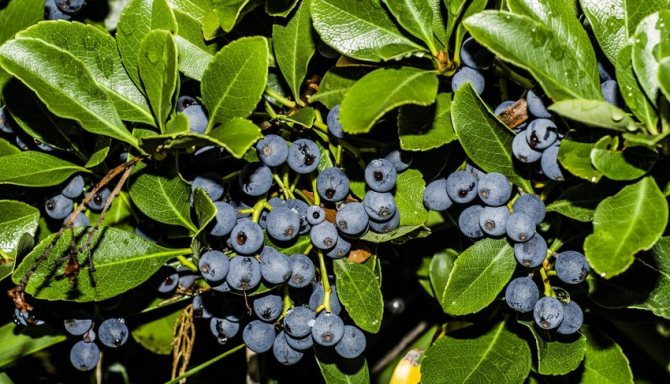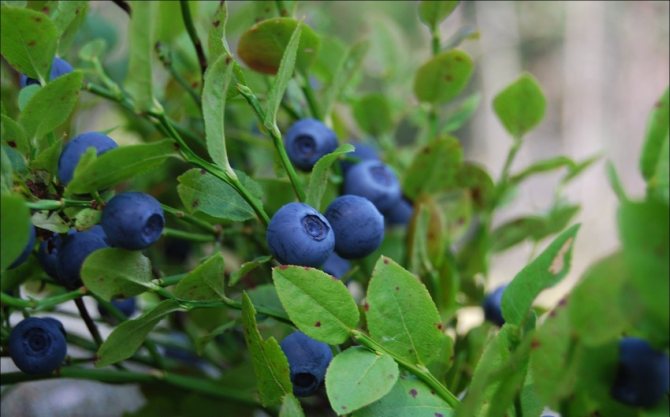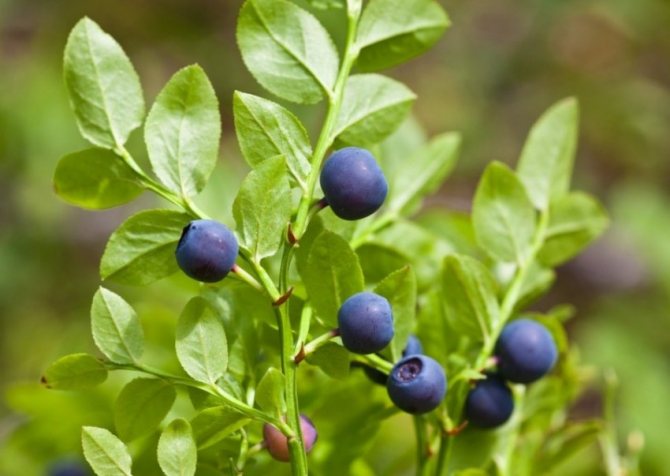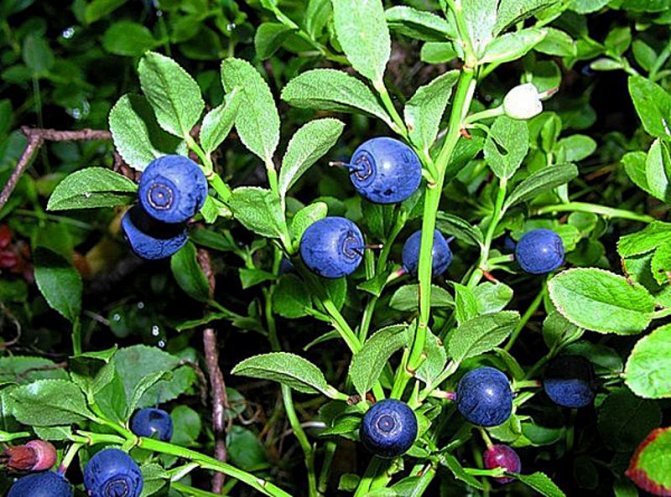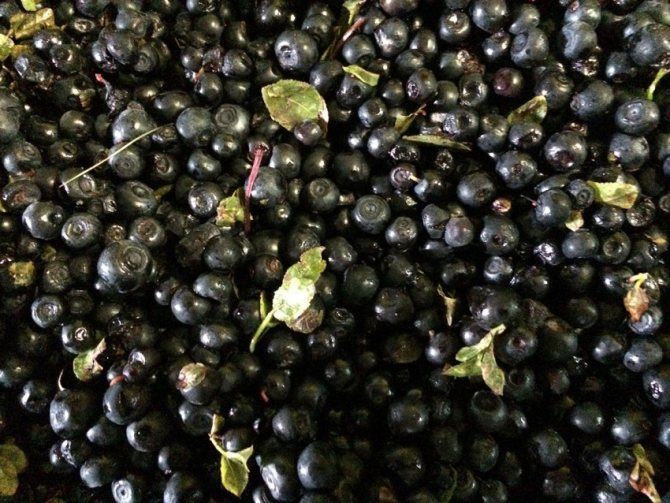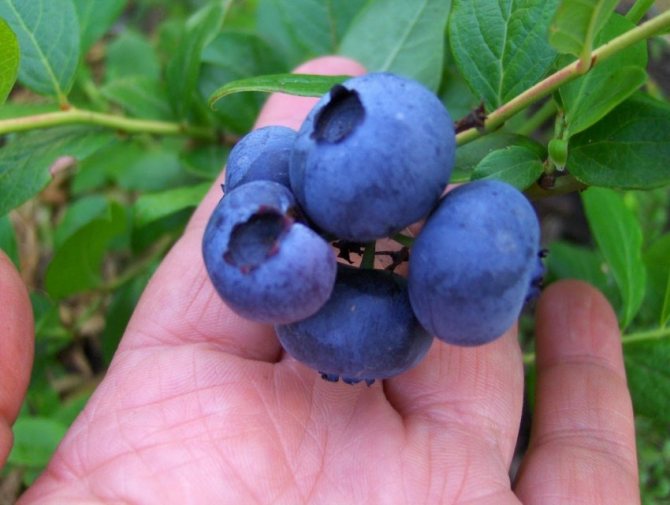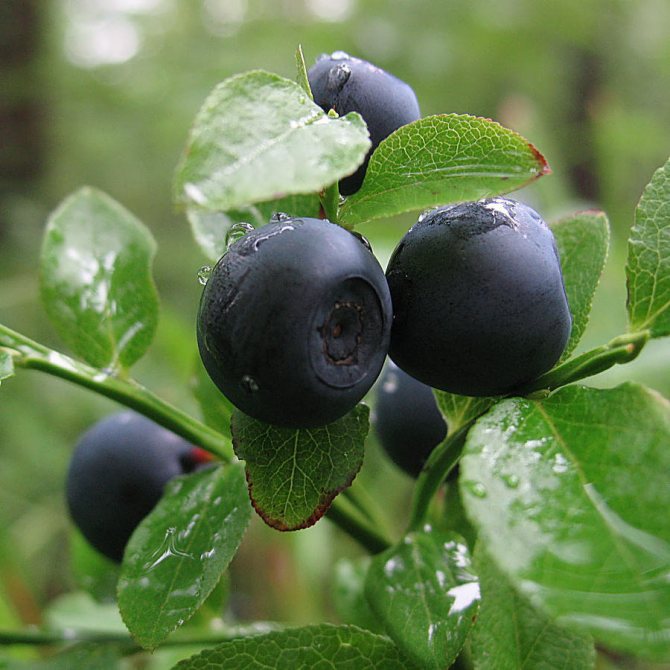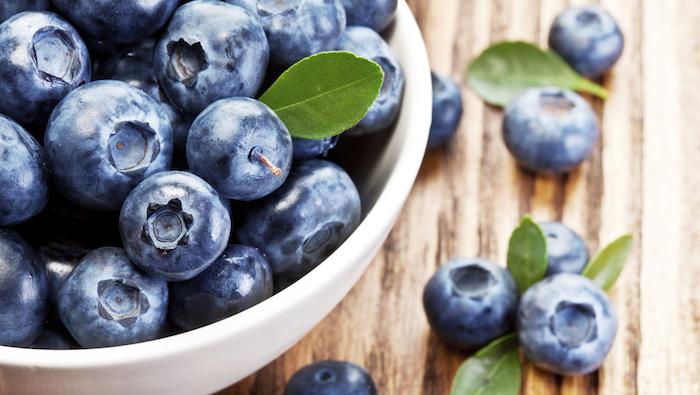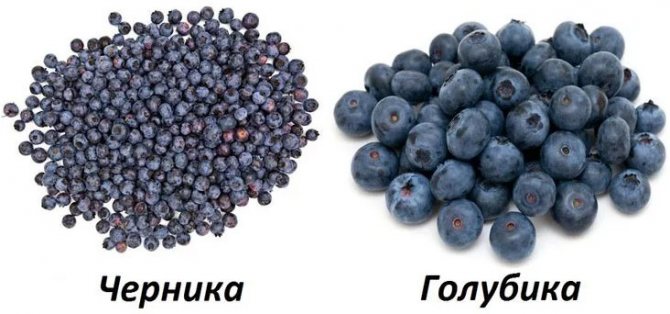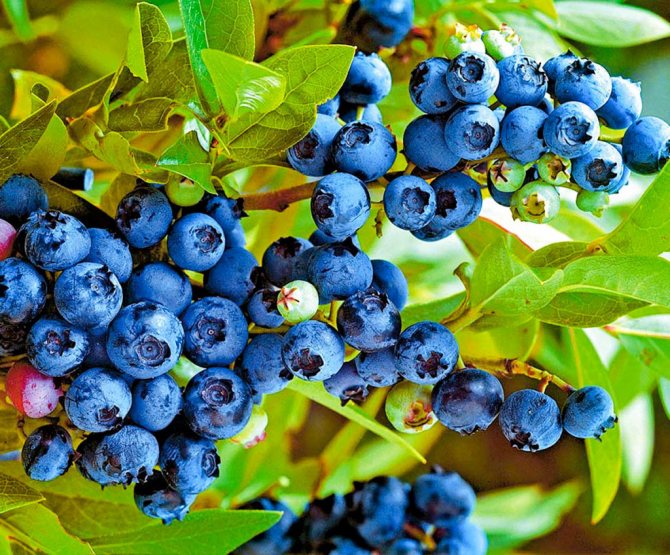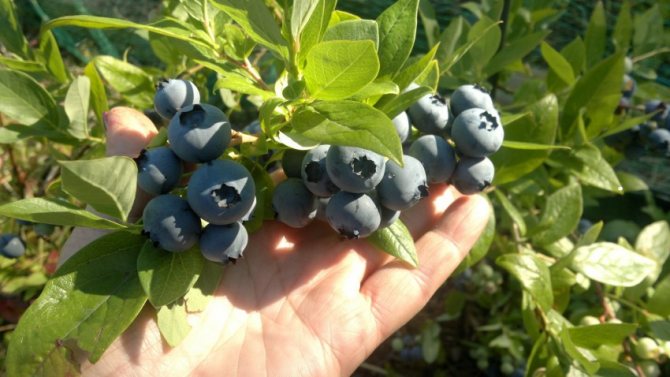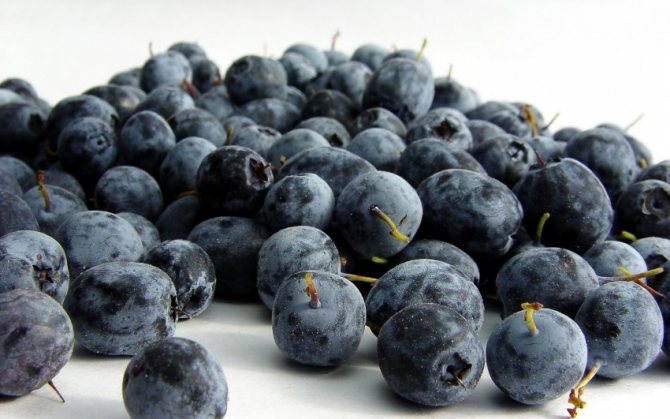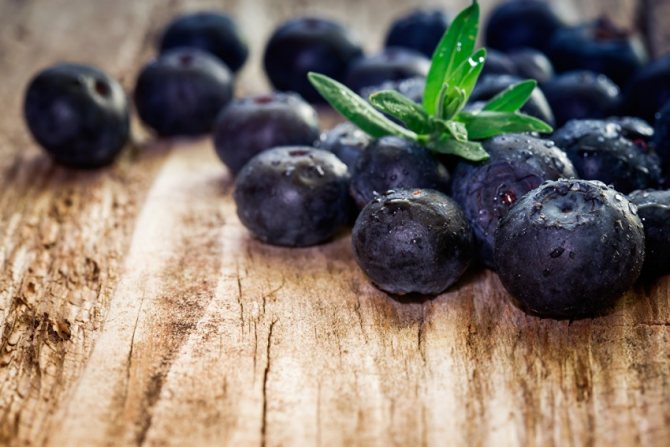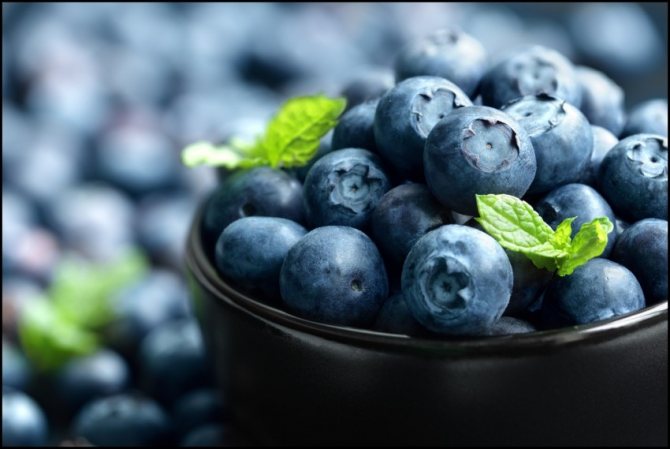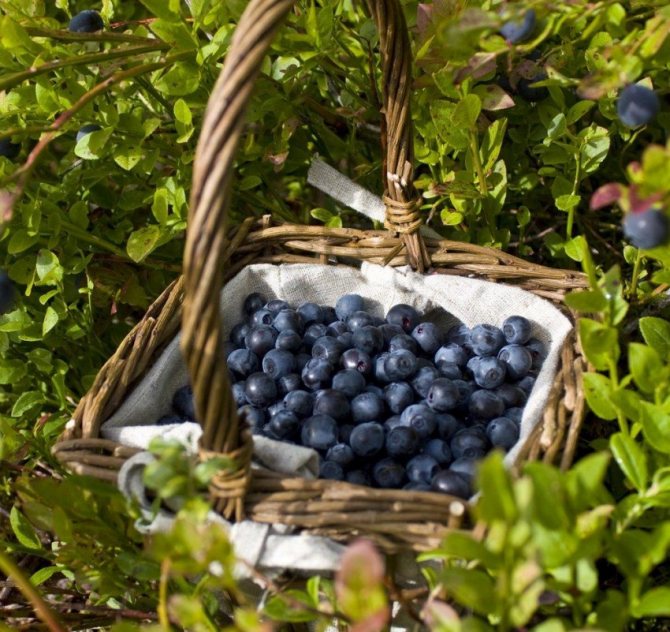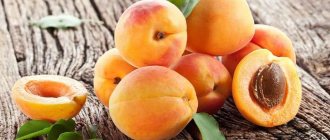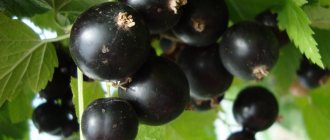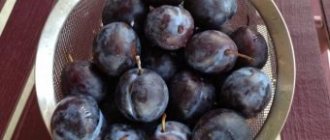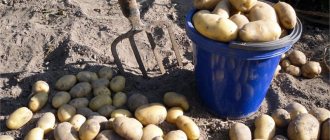Blueberries and blueberries: a comparison of berries
Wild blueberry and blueberry fruits are a real find. The shops sell garden varieties, bred mainly by breeders from Canada. They are similar in composition and quality to wild plants and bring the same benefits. Common blueberry (Vaccinium myrtillus) practically does not grow in gardens. The seedlings that are offered in the markets and in online stores are a completely different type of plant, the result of the American selection of the tall blueberry (Vaccinium cyanococcus). Their properties resemble forest fruits.
You can tell the difference between blueberries and blueberries by comparing the fruits. Smaller blueberries, weight up to 1 g. It is characterized by dark coloring substances - anthocyanins, an intense special attractive flavor with sweet-sour notes. Blueberry fruits are recognized by their light green dense, fleshy pulp and colorless, watery juice. They are sour, with a neutral, mild taste, but there are also sweet, slightly cloying ones.
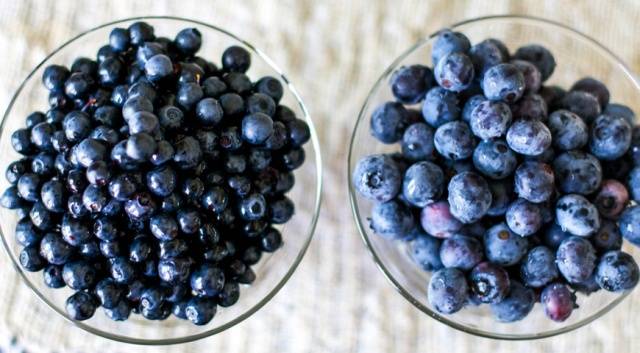
You can clearly see in the photo how blueberries differ from blueberries.
A warning! Blueberry juice leaves a mark on the skin and stains on fabric that are difficult to remove.
Which berry to choose?
Blueberries are more suitable for gardening. Since the technology of its cultivation has been carefully studied and time-tested. Only desperate and courageous lovers of forest delicacies decide to start blueberries in their garden.
Both berries are used in cooking. For fresh consumption, blueberries, which have a mild flavor, are better suited. But blueberries play brighter in preparations and desserts. The big advantage of this berry is its sharper concentrated flavor. This allows you to prepare more culinary delights from less raw materials.
5 / 5 ( 1 voice)
What is the difference between blueberries and blueberries
In nature, both plants prefer cold and temperate climates, and are found in forests and wetlands. Blueberries are low, up to 40 cm, with green, flexible shoots, on which lonely berries are visible. Grows in coniferous, more often pine forests. Blueberry bushes are higher, 0.5 m, sometimes they rise up to 1 m, lignified shoots, berries are collected in bunches. They grow in open areas, and are also found in the Caucasus. The leaves are ovoid, similar, since both shrubs belong to the same family - Heather.
At first glance, blueberries and blueberries are difficult to distinguish for a beginner. But each has its own characteristics even in appearance - the skin of one and the other is covered with a bluish bloom, the difference is visible in color. Blueberry fruits are round, dark blue, almost black ball. Blueberries are gray-blue, large, up to 12 mm, weighing 1 g, slightly elongated.


Photo: blueberries and blueberries differ in skin color.
Blueberry recipes
1) For chronic and acute diseases of the gastrointestinal tract
2 teaspoons of dried berries, pour 1 glass of boiling water, leave for 3-4 hours and filter. Take in warm form, 0.5 cups 3-4 times a day before meals.
2) With diabetes mellitus
Boil 1 teaspoon of chopped blueberry leaves with boiling water (200 ml), leave for 30 minutes on a hot stove, filter. Drink 1/3 cup 3 times a day.
3) With inflammation of the bladder, bile and urolithiasis
3 tablespoons of leaves or blueberries in 600 ml of boiling water insist 8 hours, filter.Take 200 ml 3 times a day. Used for compresses with hemorrhoidal bleeding.
Difference between blueberries and blueberries
It is interesting to compare blueberries and blueberries in terms of the composition and amount of vitamins.
| Substances per 100 g of product | Blueberry | Blueberry |
| Calories | 57 kcal | 39 kcal |
| Protein | 0.74 g | 1 g |
| Fats | 0.33 g | 0.5 g |
| Carbohydrates | 14.49 g | 8.2 g |
| Cellulose | 2.4 g | 1.2 g |
| Water | 87 g | 88.2 g |
| Ash | 0.4 g | 0.3 g |
| Vitamin A | 54 IU | 0.29 mg |
| Vitamin B1 | 0.037 mg | 0.02 mg |
| Vitamin C | 9.7 mg | 16-20 mg |
| Vitamin PP | 0.418 mg | 0.28 mg |
| Vitamin K | 19.3 mcg | 19.3 mcg |
The difference in the content of biologically active substances is rather insignificant. Shrub fruits are rich in vitamins, minerals, amino acids, fiber, pectins. In terms of the content of vitamins of different groups - C, PP, B, A, K, berries are approximately equal, although there is some difference in favor of the composition of blueberry fruits.


The difference between blueberries and blueberries, as the photo shows, is in the color of the pulp.
The healing properties of blueberries and blueberries depend not only on the availability of vitamins, but also on other components. Blueberry fruits are rich in acids - ascorbic, malic, nicotinic, acetic, oxalic. They contain a little iron - 0.8 mg, but in a form that is completely absorbed by the body. Blueberries are known for their unique high manganese content - 0.336 mg, this is their difference from other wild and cultivated plants. This element is indispensable in carbohydrate metabolic processes.
Planting blueberries outdoors
The best area for planting blueberries will be the one that is located in the shade, under the delicate shade of tall trees. The soil is acidic, while the groundwater should not lie too far from the surface of the site. If such a shrub is planted in a well-lit area, then in this case it will need frequent spraying with water during the day. If the planting of blueberries is carried out in a region with a rather mild and not too long winter, then this procedure is recommended to be carried out in August – September. In mid-latitudes and colder regions, planting of such a crop should be carried out towards the end of the spring period, after return frosts are no longer observed.
If several bushes are planted at once, then a distance of 150 cm should be observed between them.If there are row spacings, then their width should be at least 250 cm.The size of the planting hole should be 0.6x0.6 m, and the depth should be 0.8 m. At the bottom of the pit, it is necessary to make a drainage layer, for this they use broken brick or expanded clay.
Most often, the soil in the garden is not very acidic, so you need a special soil mixture to plant blueberries. To do this, in the process of preparing the planting pit, the upper nutrient layer of the soil should be thrown aside. It is combined with peat (2: 1), and powdered sulfur is added to acidify, while a quarter of a teaspoon is taken for 1 bush. To fix the excessively heavy soil, rotted oak foliage or river sand is introduced into it. With this dredge, it is necessary to completely fill the pit prepared for planting, then they wait 7-15 days, during which time the soil in the pit should have time to settle. In this regard, the preparation of the planting pit must be started 20-30 days before planting blueberries.
Experienced gardeners recommend purchasing two-year or three-year-old seedlings for planting. Carefully inspect the planting material, the fact is that instead of blueberry seedlings, you can be sold blueberries, since these crops are very similar to each other. Before planting a plant, it is necessary that its earthen lump is saturated with water. Before planting blueberries, the soil in the pit must be spilled with acidified water (1 small spoonful of citric acid per 10 liters of water), 1 bucket of mixture is taken for 1 hole. Then the surface of the soil must be loosened and a hole made in it.In this hole, a plant root system should be placed, which is very carefully straightened, while an earthen lump must be loosened. The well must be filled with an acidified earth mixture. When the plant is planted, the soil around it should be compacted, and the shrub itself needs abundant watering. When water is absorbed into the soil, its surface should be covered with a layer of mulch (sawdust or loose leaves).
If seedlings are planted that are more than 3 years old, then when they are planted, their branches are shortened to 20 centimeters. This will allow the blueberries to take root faster and better in their new location.
Comparison of the beneficial properties of blueberries and blueberries
Berries are good for health, and you should use the period of their collection to strengthen the body. Blueberries differ from blueberries in their properties and influence, although both types of fruits give an extremely positive general strengthening effect.
The benefits of blueberries
Due to its qualities, blueberry fruits and products from them are popular. They are used:
- to strengthen the cardiovascular system, including hypertension;
- to improve the functioning of the intestines and pancreas;
- to stimulate metabolism and reduce blood sugar levels;
- to normalize brain activity in the field of improving memory and concentration;
- to relieve eye fatigue during strenuous work at the computer;
- as an anti-inflammatory and anti-dysentery agent;
- in case of anemia and to improve immunity.
Pectins and anthocyanins promote the elimination of toxins, maintain neural connections, therefore, the berries are recommended to their patients by nutritionists, oncologists and gerontologists.
However, you shouldn't eat blueberry fruits alone, as they can cause allergies, intestinal upset and muscle dysfunction.
Attention! Daily consumption of 500 ml of blueberry juice restores memory functions in the elderly.
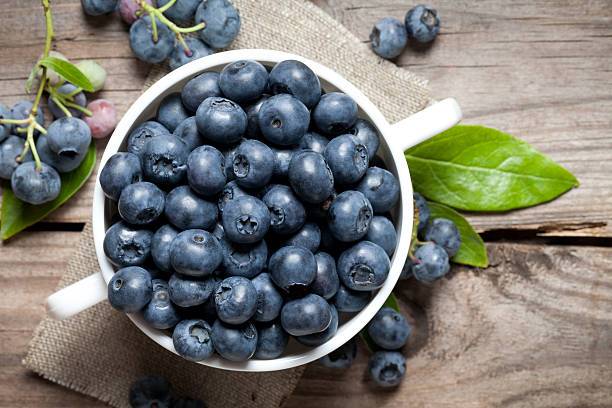

The benefits of blueberries
A characteristic feature of the composition of blueberry fruits is a large amount of ascorbic acid and antioxidants. Many consider these berries to be a panacea for diseases and eye fatigue, to support the retina. Moreover, they produce pharmaceuticals based on them.
It has been established that blueberry fruits are shown:
- with a decrease in visual acuity;
- with the threat of the development of cardiovascular diseases and atherosclerosis in particular;
- during an upset gastrointestinal tract;
- to cleanse the body of toxins, with anemia and low immunity;
- as the prevention of cancer;
- with high blood sugar;
- in case of infectious or colds.
Berries are used as an antibiotic for the treatment of burns or abscesses on the skin, in folk medicine they are used for urolithiasis.
There are also contraindications: chronic constipation and diseases of the pancreas and duodenum.
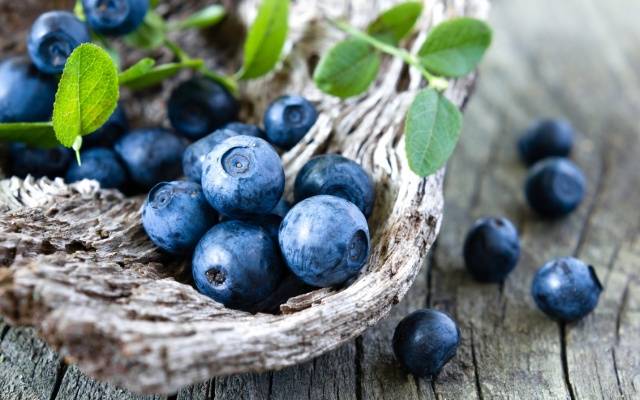

Which berry is healthier: blueberries or blueberries
There is a general consensus that blueberries are healthier than blueberries. There is a slight difference between their properties. And at the same time, vitamin fruits saturate the body with useful substances and enhance its protective functions:
- to maintain healthy eyes, blueberry fruits are better, although blueberries will also contribute to strengthening vision;
- the latter are irreplaceable for the elderly with their properties to improve memory and thinking processes, as well as to normalize bowel function.
Blueberry application


The berries and leaves of blueberries have medicinal uses. Bilberry leaves and fruits are used as an astringent for acute and chronic digestive disorders, accompanied by diarrhea, loss of body weight, appetite, dyspepsia associated with increased fermentative and putrefactive processes, colitis and enterocolitis.
As a remedy containing vitamins, it is recommended for scurvy and other hypo- and avitaminosis.
Often used topically for stomatitis and gingivitis as an astringent and antiseptic.
Blueberries are widely known as an anti-inflammatory agent (for non-infectious diarrhea), especially in children. As an adjuvant, along with antibiotics, it is used for dysentery and vitamin deficiencies.
Fresh blueberries in large quantities are prescribed for gout, rheumatism and other diseases associated with metabolic disorders, kidney stones, anemia.
The difference in growing berries
The difference between blueberries and blueberries is the ability to take root in gardens. Eurasian blueberry plants require special conditions that are almost impossible to fulfill. Garden shrubs are derived from plants from North America. Both species should be planted in open areas or in light partial shade, on sour soils and take care of drainage in the holes.
Features of growing blueberries
When buying seedlings in spring, they choose early and medium varieties, because late-ripening ones in our conditions may not ripen. Low-growing bushes are suitable for the northern regions. Pay attention to the taste of the variety.
Care instructions:
- when planting, you cannot add ash and manure, fertilize with minerals;
- watered in the phase of flowering and the formation of ovaries;
- the trunk circle is mulched with peat, oak leaves, needles.
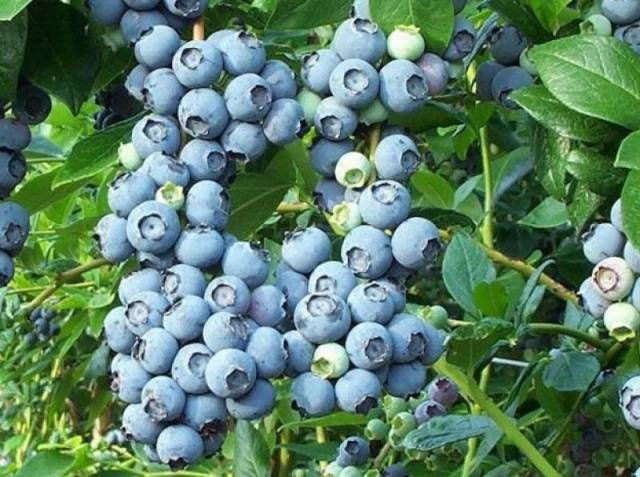

How blueberries are grown
Blueberry seedlings are chosen based on the height of the bushes, the size and sugar content of the berries, and the ripening time. When growing, adhere to these tips:
- the distance between the holes is up to 1.5 m;
- regular watering is the key to good development of the shrub;
- are fed with minerals, without organic matter.


Comparison of the yield and harvest time of blueberries and blueberries
Garden shrubs are fruitful, yield up to 7 kg per plant. Fruits are harvested from late June to early autumn, plucked every week.
Important! Berries from blueberry bushes are not pulled off the stalk, but carefully turned to preserve their integrity.
Blueberry fruits, depending on the variety, ripen from late July to mid-autumn. Ripe, weighing 10-25 g, acquire a gray-blue tint. But you don't need to rip them off right away. They wait another 5-10 days for the fruits to pick up sugar and soften, removed with a dry separation. The first harvest is consumed fresh, and the late harvest is allowed for processing.
Is it possible to grow blueberries at home
This question is asked by many supporters of proper nutrition and a healthy lifestyle. Compared to blueberries, blueberries have not yet entered the commercial berry industry. Therefore, it is worth starting with the fact that if you need to grow real blueberries, which usually grow in the forest, on your site, you should start harvesting planting material on your own, since there are practically no real blueberry seedlings in stores. It would be a mistake to believe that this forest berry cannot be grown with your own hands, in an artificially created environment. But this process will be quite painstaking and laborious. Consider the main aspects of home blueberry cultivation.
We create the most approximate soil conditions for the natural habitat of blueberries. What is needed for this - a month before planting, select and prepare a site. Blueberries, for good yields, should be placed in a sunny area or in partial shade. The soil is dug to a depth of 60 cm. It will not be superfluous to add and mix powdered sulfur, oak leaves and needles with the soil in order to regulate the acid level and bring it to the required rate. Organization of seats. A hole is dug under each blueberry bush, with a diameter of 0.5-0.6 m and a depth of 50 cm. Peat chips are added to it, mixed with the ground, in a ratio of 1: 2. Then the pit is filled with soil of the same composition. Preparation of planting material and planting. Perhaps this is the most important point. Where can I get real blueberry seedlings? They can be dug out in the forest, delivered to the landing site with their own lump of earth.You should choose low, young bushes. If there are none, they take the old ones, and after landing, the ground part is shortened. You can also get seedlings from seeds. To do this, you need to take ripe blueberries, knead well, place in a deep container and pour enough water. The dummy seeds will float up, and the pulp and fertile seeds will remain at the bottom. These seeds are extracted, then they are laid out on a cloth to dry a little, and then they are sown several pieces in pots with moistened peat and sand. These pots should be covered with foil or glass, placed in a lighted room with an air temperature of + 5 ... + 10 ° С. With the correct manipulations and a favorable coincidence of circumstances, the first shoots will appear in a month. Two weeks later, they are dived in a larger container and grown for one year, after which they are planted in open ground. Planting blueberries. On the day of X, they take pre-prepared seedlings, trying to preserve the native lump of earth as much as possible, moisten the edges of the roots with water and place them in the pits. In this case, the root ball must be slightly loosened, and the roots must be straightened a little so that they have the opportunity to grow further. The root point deepens into the ground by no more than 1–2 cm. Then the pits should be carefully covered with soil, tamped, watered and mulched with needles, dry oak or maple leaves.
Typically, blueberries, with proper care, can grow and bear fruit for up to 15–20 years. In order for the shrub to last as long as possible, it should be cut off in time. First of all, shoots are cut, the age of which exceeds 4 years - less and less ovary will appear on such branches in the future. The correct decision would be to initially start forming a bush. To do this, you need to select from 5 to 9 of the most fertile and most powerful branches, and in the future follow this pattern. Since blueberries are often a creeping plant, trellis may be needed when planting in confined spaces. It can be planted both in spring and autumn.
Interesting Blueberry Facts:
Blueberry juice is an important ingredient in food coloring. Blueberries are a valuable honey plant. Monuments to this berry have been erected in the Ukrainian Transcarpathia and in Krasnovishersk (Russia). During World War II, it was believed that the American and British military used a secretly developed blueberry-based product that allows them to see perfectly at night without special devices. In fact, it was a fiction to intimidate the Nazis and prevent them from starting hostilities in the dark. Extracts from any parts of the blueberry bush, including rhizomes and berries, are used in the chemical industry for the manufacture of dyes for fur and leather products.
What else is worth remembering when growing blueberries? The need for proper care. Trying to increase fertility, it is not necessary to stuff the plants with shock doses of mineral and organic fertilizers. It can react especially badly to organics. It is always important to remember that blueberries are by nature a wild plant, so you need to try to keep them as natural as possible. Therefore, it is permissible to feed it once a year (in spring or autumn), before the appearance of leaves and after their shedding, respectively, with a full complex of mineral fertilizers.
Those gardeners who are eager to grow blueberries on their land should not fall for the various marketing gimmicks of enterprising planting stock distributors who often pass blueberries for blueberries. It is important for everyone to know that common blueberries are not divided into varieties, they are one of a kind. But what blueberries are, and what they are, the following information will help you figure it out.
Differences in storage, processing and transportation of berries
Fresh blueberry fruits last a month and a half at temperatures close to zero. Blueberries are kept in such conditions for 15 days. Fruits are transported in small boxes, folded in three to four layers. Both types of berries are frozen or dried, used for different preparations and fillings.
Advice! Leaves of both plants are suitable for medicinal purposes.
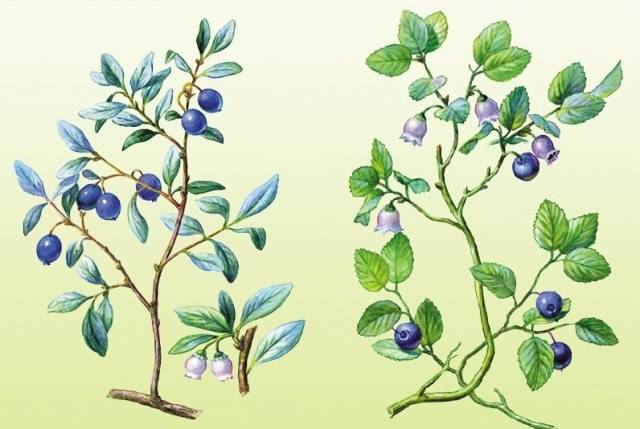

Description and characteristics
Where blueberries grow
Plant characteristic
| Common blueberry description by evaluation parameters | |
| Bush, leaf, plant shade | The length of the deciduous shrub is forced from 15 to 50 cm. Branches are bare, bright green, branched. The leaves are pointed at the tops, pale below, leathery, finely serrated at the edges, solid. The shape is ovoid-elliptical. The shade is green. Leaves fall off by winter. |
| How blueberry bushes bloom, timing, characteristics of flowers | Begins to bloom in May, June. The plant is bee-pollinated. The fruits ripen by July. Fruiting from 2-3 years of age. The flowers are regular, with 4-5 bent teeth, on short pedicels, single ones in the leaf axils. The corolla of the flower is spherical, greenish with a pinkish tinge. |
| Fruits, their taste, calorie content | They are spherical, black berries with a blue tint. Inside, they are purple-red with many seeds. Fresh berries have a low calorie content, sweet, juicy taste. |
| Root system | Rod. Consists of hundreds of small and branched roots without root hairs. Reaches a length of 3 m. |
| Frost resistance | High. Withstands frosts down to -37 degrees Celsius. |
| Drought resistance | Low. Common blueberry prefers swampy areas, with a slight lack of water begins to wither, the fruits lose their visual appeal and taste. |
| Transportability | Good. The berry is suitable for long-term storage at controlled temperatures. |

